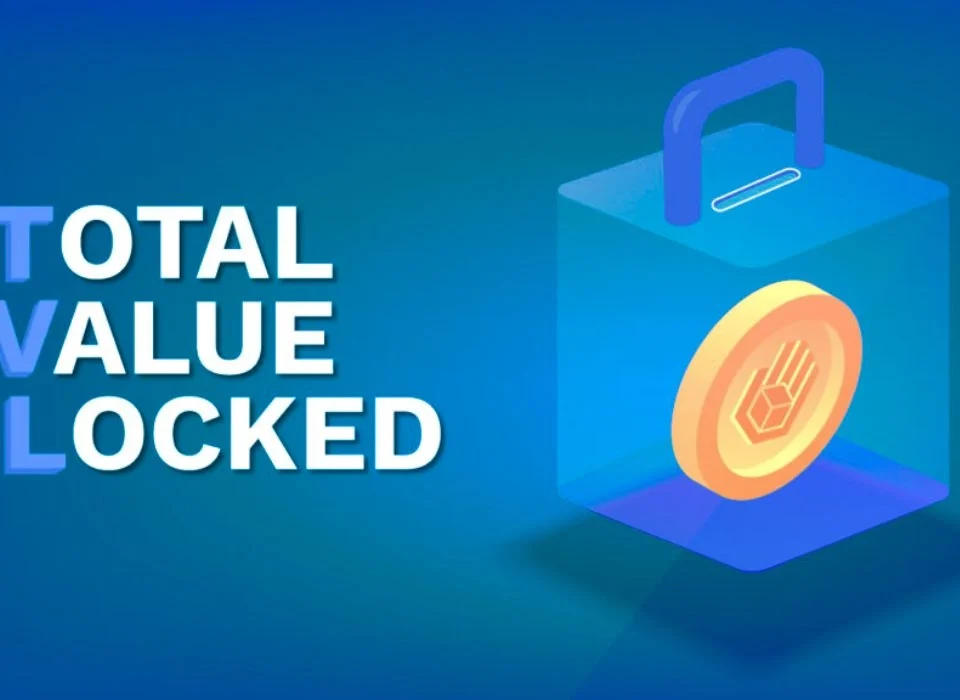
The Role of Blockchain in Real Estate: Transforming an Industry
10/08/2024
Different Ethereum vs Ethereum classic
14/08/2024The Top 10 Cryptocurrency Tokens: History, Growth Factors, Risks, and Optimal Buying Times
Cryptocurrency has emerged as a revolutionary financial asset class, offering decentralized alternatives to traditional currencies and financial systems. With thousands of cryptocurrencies available today, some tokens have risen to prominence due to their unique features, strong communities, and innovative technologies. This article explores the top 10 cryptocurrency tokens, delving into their history, growth factors, risks, and the best times to consider buying them.
1. Bitcoin (BTC)
History
Bitcoin, created by the pseudonymous Satoshi Nakamoto, was launched in 2009 as the first decentralized cryptocurrency. It introduced the concept of a peer-to-peer digital currency that operates without a central authority, relying on blockchain technology to secure transactions.
Growth Factors
- Adoption as Digital Gold: Bitcoin is often referred to as “digital gold” due to its scarcity (21 million cap) and use as a store of value.
- Institutional Investment: Increasing interest from institutional investors, such as hedge funds and public companies like Tesla, has driven Bitcoin’s price.
- Global Adoption: Bitcoin is increasingly being accepted as a payment method by merchants worldwide.
Risks
- Regulatory Uncertainty: Government regulations can significantly impact Bitcoin’s price.
- Market Volatility: Bitcoin is known for its high price volatility, which can result in substantial price swings.
Best Time to Buy
The best time to buy Bitcoin is typically during market corrections or after a significant price drop, allowing for entry at lower price levels.
2. Ethereum (ETH)
History
Ethereum was proposed by Vitalik Buterin in late 2013 and launched in 2015. It introduced smart contracts, self-executing contracts where the terms of the agreement are directly written into code.
Growth Factors
- Smart Contracts and dApps: Ethereum’s ability to run decentralized applications (dApps) and smart contracts has made it a leading platform for blockchain innovation.
- Decentralized Finance (DeFi): The rise of DeFi platforms has driven demand for Ethereum, as most DeFi projects are built on its blockchain.
- Ethereum 2.0 Upgrade: The transition to Ethereum 2.0, which involves moving from Proof of Work (PoW) to Proof of Stake (PoS), aims to improve scalability and reduce energy consumption.
Risks
- Scalability Issues: High gas fees and slower transaction times during periods of high demand are ongoing challenges.
- Competition: Emerging blockchain platforms, such as Binance Smart Chain and Solana, pose competitive threats.
Best Time to Buy
Investing in Ethereum can be advantageous before major upgrades, like the Ethereum 2.0 phases, or during market pullbacks.
3. Binance Coin (BNB)
History
Binance Coin was launched in 2017 by the Binance cryptocurrency exchange. Initially an ERC-20 token on Ethereum, BNB later migrated to Binance’s own blockchain, Binance Chain.
Growth Factors
- Exchange Utility: BNB is used to pay transaction fees on the Binance exchange, often at a discount, which drives demand.
- Token Burns: Binance regularly burns (destroys) a portion of BNB, reducing supply and potentially increasing the token’s value.
- Binance Smart Chain: The success of Binance Smart Chain (BSC), a platform for dApps and DeFi projects, has significantly boosted BNB’s usage and price.
Risks
- Regulatory Scrutiny: As Binance faces regulatory scrutiny in various countries, BNB’s price may be impacted.
- Centralization Concerns: Binance Chain is perceived as more centralized compared to other blockchains like Ethereum.
Best Time to Buy
The optimal time to buy BNB is during market dips, especially before major token burns or new product launches by Binance.
4. Cardano (ADA)
History
Cardano was founded by Charles Hoskinson, one of the co-founders of Ethereum, and launched in 2017. It was developed with a research-driven approach, focusing on scalability, sustainability, and security.
Growth Factors
- Research-Driven Development: Cardano’s unique approach, which involves peer-reviewed academic research, appeals to a wide range of investors.
- Proof of Stake: Cardano’s Ouroboros PoS consensus algorithm is more energy-efficient than PoW, attracting environmentally conscious investors.
- Smart Contracts: The introduction of smart contracts on Cardano with the Alonzo upgrade has expanded its functionality and potential for dApps and DeFi.
Risks
- Slow Development: Cardano’s methodical, research-based development has been criticized for being too slow compared to competitors.
- Uncertainty Over Adoption: Despite strong potential, the adoption of Cardano’s smart contract platform is still in its early stages.
Best Time to Buy
Cardano is often best purchased before major network upgrades or announcements, such as the launch of new features or partnerships.
5. Solana (SOL)
History
Solana, launched in 2020 by Anatoly Yakovenko, is a high-performance blockchain that offers fast transactions and low fees. It uses a unique consensus mechanism called Proof of History (PoH) combined with Proof of Stake (PoS).
Growth Factors
- High Speed and Low Costs: Solana’s ability to process thousands of transactions per second at minimal cost has made it a favorite for developers and DeFi projects.
- Growing Ecosystem: The rapid expansion of Solana’s ecosystem, including DeFi, NFTs, and dApps, has driven significant demand for SOL.
- Institutional Interest: Increased interest from institutional investors and venture capital in Solana-based projects has boosted SOL’s value.
Risks
- Network Outages: Solana has experienced occasional network outages, raising concerns about its reliability.
- Competition: Solana faces competition from other scalable blockchains like Ethereum 2.0 and Avalanche.
Best Time to Buy
Buying Solana can be strategic during periods of network growth, when new projects are launching, or after any temporary network issues that might cause price dips.
6. Ripple (XRP)
History
Ripple (XRP) was launched in 2012 by Ripple Labs with the goal of enabling fast and cost-effective cross-border payments. Unlike many other cryptocurrencies, XRP is not based on a blockchain but uses a distributed consensus ledger.
Growth Factors
- Partnerships with Financial Institutions: Ripple’s partnerships with banks and financial institutions worldwide have boosted its credibility and demand.
- Fast Transactions: XRP offers transaction speeds of just a few seconds and low fees, making it suitable for global payments.
- Utility in Cross-Border Payments: Ripple’s focus on cross-border payments has positioned XRP as a potential competitor to traditional payment systems like SWIFT.
Risks
- Regulatory Issues: Ripple Labs is currently embroiled in a lawsuit with the U.S. Securities and Exchange Commission (SEC) over whether XRP is a security, which creates uncertainty.
- Centralization Concerns: Ripple’s ownership of a significant portion of XRP has led to concerns about centralization.
Best Time to Buy
The best time to buy XRP could be during periods of favorable news related to its SEC lawsuit or when Ripple announces new partnerships.
7. Polkadot (DOT)
History
Polkadot was created by Dr. Gavin Wood, a co-founder of Ethereum, and launched in 2020. It aims to facilitate interoperability between different blockchains, allowing them to communicate and share data seamlessly.
Growth Factors
- Interoperability: Polkadot’s ability to connect multiple blockchains and enable cross-chain communication has driven demand for DOT.
- Scalability: Polkadot’s parachain model allows for parallel processing of transactions, improving scalability.
- Strong Developer Community: Polkadot has attracted a large and active developer community, leading to the rapid growth of its ecosystem.
Risks
- Complexity: The complexity of Polkadot’s technology may hinder adoption among less technical users and developers.
- Competition: Polkadot faces competition from other interoperability-focused projects like Cosmos.
Best Time to Buy
Polkadot is often best bought during periods of ecosystem expansion, such as the launch of new parachains or cross-chain projects.
8. Dogecoin (DOGE)
History
Dogecoin was created in 2013 as a joke by software engineers Billy Markus and Jackson Palmer. Despite its origins as a meme coin, Dogecoin has grown into a popular cryptocurrency with a strong community.
Growth Factors
- Community Support: Dogecoin has a loyal and active community that drives its adoption and market value.
- Celebrity Endorsements: Public endorsements from celebrities like Elon Musk have significantly influenced Dogecoin’s price.
- Low Transaction Fees: Dogecoin’s low fees and fast transaction times make it suitable for microtransactions and tipping.
Risks
- Lack of Development: Dogecoin’s development has lagged behind other cryptocurrencies, raising concerns about its long-term viability.
- Volatility: Dogecoin’s price is highly volatile and influenced by social media and public sentiment.
Best Time to Buy
The best time to buy Dogecoin is typically during periods of market hype or after major endorsements, though this also comes with increased risk due to its volatility.
9. Chainlink (LINK)
History
Chainlink was launched in 2017 to solve the “oracle problem” by connecting smart contracts with real-world data. It provides decentralized oracles that allow smart contracts to interact with external data sources.
Growth Factors
- Oracles for DeFi: Chainlink’s oracles are crucial for the functioning of many DeFi platforms, driving demand for LINK
.
- Partnerships and Integrations: Chainlink has formed numerous partnerships with blockchain projects, expanding its use cases.
- Innovation: Chainlink continues to innovate with new features like verifiable randomness and cross-chain communication.
Risks
- Competition: Chainlink faces competition from other oracle providers like Band Protocol.
- Dependency on Ethereum: As Chainlink is primarily built on Ethereum, its performance is closely tied to the Ethereum network.
Best Time to Buy
Investing in Chainlink can be advantageous when new partnerships are announced or when the broader DeFi sector is experiencing growth.
10. Litecoin (LTC)
History
Litecoin was created by Charlie Lee in 2011 as a “lighter” version of Bitcoin. It was designed to provide faster transaction times and lower fees than Bitcoin, making it more suitable for everyday transactions.
Growth Factors
- Faster Transactions: Litecoin’s block generation time is four times faster than Bitcoin’s, making transactions quicker.
- Adoption for Payments: Litecoin is widely accepted by merchants and is often used for smaller transactions due to its lower fees.
- Active Development: The Litecoin development team continues to work on improvements, such as implementing privacy features like MimbleWimble.
Risks
- Less Innovation: Litecoin is often seen as a less innovative version of Bitcoin, which may limit its appeal.
- Competition: Litecoin faces competition from other cryptocurrencies designed for fast and low-cost transactions, such as Bitcoin Cash and Dash.
Best Time to Buy
The best time to buy Litecoin is during periods of market correction or before significant network upgrades or announcements.
Conclusion
Cryptocurrency tokens offer a diverse range of investment opportunities, each with its own unique set of growth factors, risks, and optimal buying times. Understanding the history and fundamentals of these top 10 tokens—Bitcoin, Ethereum, Binance Coin, Cardano, Solana, Ripple, Polkadot, Dogecoin, Chainlink, and Litecoin—can help investors make informed decisions in the volatile and rapidly evolving crypto market. While these tokens have shown significant potential, it’s important to conduct thorough research and consider market conditions before making any investment decisions.




2 Comments
Oh my goodness! Awesome article dude! Thank you, However I
am encountering problems with your RSS. I don’t understand why I can’t subscribe to it.
Is there anybody getting the same RSS problems? Anyone who
knows the solution will you kindly respond? Thanx!!
hey there and thank you for your information – I’ve
certainly picked up something new from right here.
I did however expertise some technical issues using this website, as
I experienced to reload the web site many times previous to I could get it to load correctly.
I had been wondering if your web host is OK?
Not that I am complaining, but slow loading instances times will sometimes affect your placement in google and could damage your quality
score if advertising and marketing with Adwords.
Well I’m adding this RSS to my email and can look out for
a lot more of your respective intriguing content.
Make sure you update this again very soon.